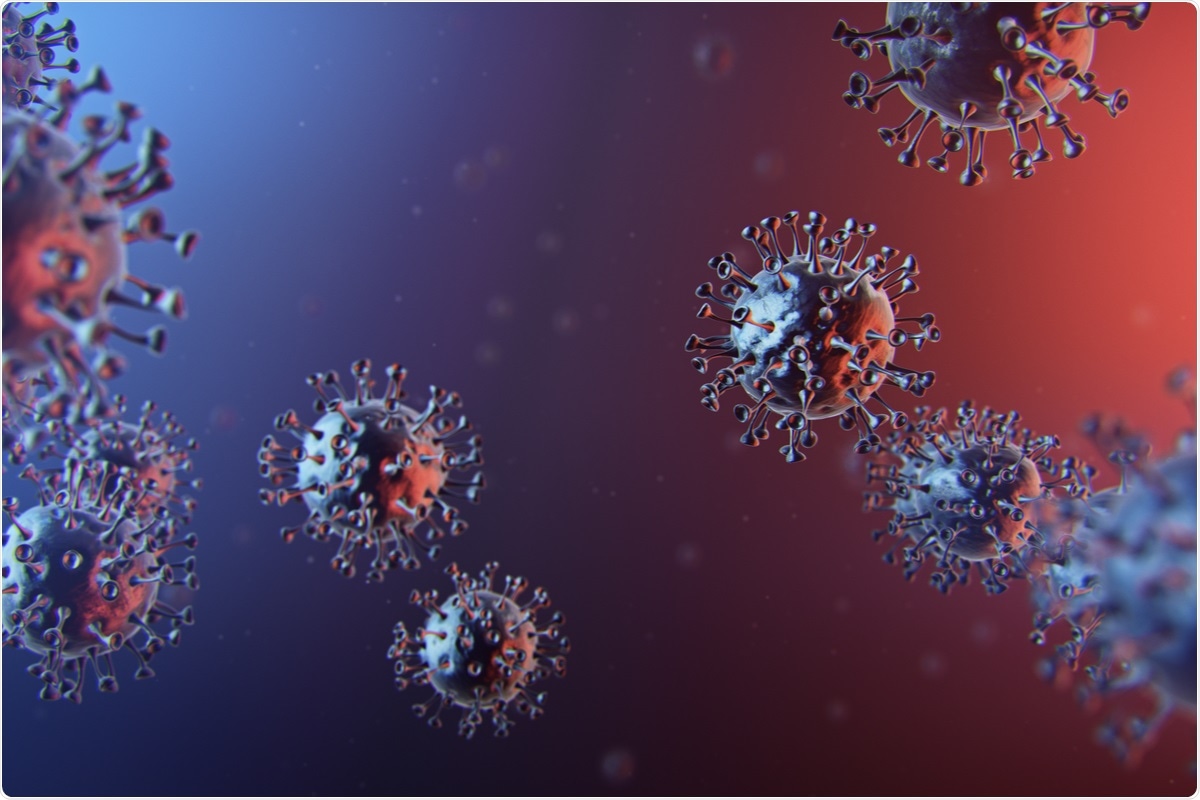Both severe acute respiratory syndrome coronavirus (SARS-CoV) and Middle East respiratory syndrome coronavirus (MERS-CoV) of the Coronaviridae family rapidly spread among humans can cause fatal respiratory diseases. But these viruses never reached pandemic scale. However, severe acute respiratory syndrome coronavirus 2 (SARS-CoV-2) quickly reached the pandemic scale. More than 243 million infections and 4.94 million deaths associated with coronavirus 2019 (COVID-19), the disease caused by SARS-CoV-2.
 Study: Discovery of Potent Triple Inhibitors of Both SARS-CoV-2 Proteases and Human Cathepsin L. Image Credit: easyease/ Shutterstock
Study: Discovery of Potent Triple Inhibitors of Both SARS-CoV-2 Proteases and Human Cathepsin L. Image Credit: easyease/ Shutterstock

 This news article was a review of a preliminary scientific report that had not undergone peer-review at the time of publication. Since its initial publication, the scientific report has now been peer reviewed and accepted for publication in a Scientific Journal. Links to the preliminary and peer-reviewed reports are available in the Sources section at the bottom of this article. View Sources
This news article was a review of a preliminary scientific report that had not undergone peer-review at the time of publication. Since its initial publication, the scientific report has now been peer reviewed and accepted for publication in a Scientific Journal. Links to the preliminary and peer-reviewed reports are available in the Sources section at the bottom of this article. View Sources
There are two essential viral targets that control the production of functional proteins of SARS-CoV-2, the main protease (Mpro) and Papain-like protease (PLpro). The production of the essential polypeptides polypeptide 1a (pp1a) and polypeptide 1b (pp1ab) is enabled by a frameshift between open reading frame 1a (ORF1a) and open reading frame 1b (ORF1b). These polypeptides are processed into 16 non-structural proteins vital to viral replication and assembly, which have been considered potential targets for inhibition.
Researchers from the University of California San Diego tested analogs of disulfiram on SARS-CoV-2 Mpro and PLpro to find more efficient and effective inhibitors that take advantage of disulfiram’s mechanism of binding to the cysteine residue. The analogs utilized in this study contained thiuram disulfide or dithiobis-(thioformate), to maintain cysteine binding activity.
A preprint version of this study, which is yet to undergo peer review, is available on the bioRxiv* server.
The study
The authors used six thiuram disulfide analogs with different N-substituents and one dithiobis-(thioformate), RI171 to RI177, to test against the Mpro and PLpro of SARS-CoV-2. To show the activities of Mpro and PLpro in the presence of select compounds, the authors conducted fluorometric enzymatic assays.
The inhibitory activities of JX 06 and RI172 against Mpro with the half-maximum inhibitory concentration (IC50) of 0.56 ± 0.06 and 0.63 ± 0.13 nM, displayed approximately three folds improvement from disulfiram with a IC50 value of 1.48 ± 0.06 µM. In contrast, RI171, RI177, and Thiram displayed marginally weaker inhibition effects in comparison to disulfiram. Additionally, RI171, RI172, JX 06, and Thiram, the four disulfide compounds, displayed improved potency against PLpro with IC50 of 0.25 ± 0.05, 0.68 ± 0.01, 0.62 ± 0.03, and 1.93 ± 0.06 µM.
The replication of SARS-CoV-2 is dependent on Mpro and PLpro, but there are also other proteases vital to the process, including cathepsin L, furin, and TMPRSS2. The authors selected the endosomal cathepsin and TMPRSS” proteases that facilitate SARS-CoV-2 entry into host cells.
The inhibition activity of the two selected compounds was analyzed against 1nM of cathepsin L using 30 µM of Z-Phe-Arg-AMC as a fluorogenic substrate. The IC50 values of RI175 and JX 06 (1.65 and 1.91 µM) displayed slight improvement from disulfiram (2.19 ± 1.36 µM). The compound RI172 showed significant enhancement and high potency (0.19 ± 0.03 µM), which was 11.5 times more potent when compared to disulfiram.
The authors then further investigated the compounds previously used to determine if they also inhibited other proteases associated with SARS-CoV-2 infection. In Sever COVID-19, blood clots, acute inflammation, and severe pneumonia are all common complications. The typical immune response to a viral or bacterial infection is coagulation.
However, the main immune response typically associated with a SARS-CoV-2 infection is hyper-inflammation, which is activated by cytokines such as tumor necrosis factor, interleukin-1, and interleukin-6, can result in severe inflammation and harmful tissue damage if they are produced in excessive amounts. The authors tested their selected compounds on thrombin, the key protease in clot initialization. However, their analogs failed to show any significant inhibition.
Implications
The authors of this study have identified a single chemical substance that may inhibit both the viral proteases, Mpro and PLpro, and at least one human protease involved in the SARS-CoV-2 infectivity cycle. The compound identified by the authors may also be specific to host and viral targets. The compounds utilized in this study have the potential to slow down the viral infectivity cycle and modulate inflammatory responses.

 This news article was a review of a preliminary scientific report that had not undergone peer-review at the time of publication. Since its initial publication, the scientific report has now been peer reviewed and accepted for publication in a Scientific Journal. Links to the preliminary and peer-reviewed reports are available in the Sources section at the bottom of this article. View Sources
This news article was a review of a preliminary scientific report that had not undergone peer-review at the time of publication. Since its initial publication, the scientific report has now been peer reviewed and accepted for publication in a Scientific Journal. Links to the preliminary and peer-reviewed reports are available in the Sources section at the bottom of this article. View Sources
Article Revisions
- May 1 2023 - The preprint preliminary research paper that this article was based upon was accepted for publication in a peer-reviewed Scientific Journal. This article was edited accordingly to include a link to the final peer-reviewed paper, now shown in the sources section.